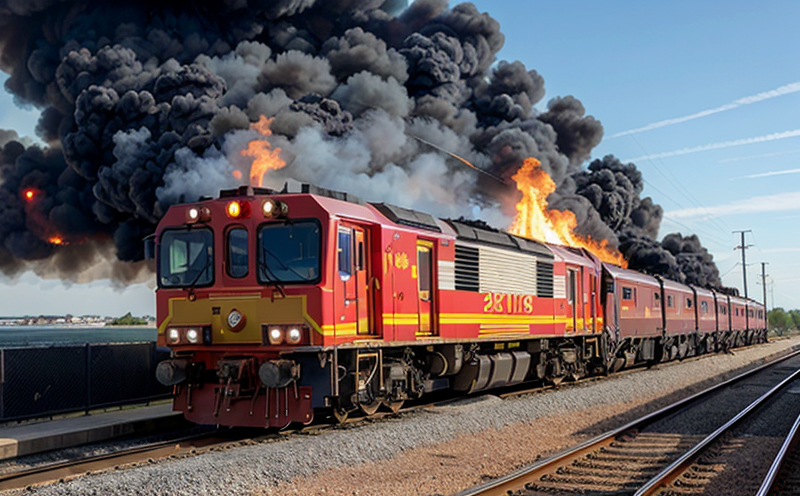Flammability Testing of Marine Wall and Ceiling Panels
The flammability testing of marine wall and ceiling panels is a critical aspect of ensuring the safety and compliance with international regulations for ships, ferries, and other maritime vessels. This test evaluates how materials used in these structures perform under specific fire exposure conditions. Understanding this process helps quality managers, compliance officers, R&D engineers, and procurement specialists make informed decisions that enhance the integrity and safety of marine environments.
Flammability testing is not only a requirement for compliance but also a means to protect lives by minimizing the risk of fire and smoke inhalation. The International Maritime Organization (IMO) has stringent requirements for materials used in marine structures, which are outlined in various international standards such as ISO 6941-3:2015 and ASTM E84-18.
The testing process involves subjecting the panels to controlled flames under specific conditions. The primary goal is to determine how quickly or slowly they ignite, burn, and extinguish after the flame source is removed. This helps in assessing the material's resistance to fire propagation and its potential for producing harmful smoke and toxic gases.
During this testing, it is essential to prepare specimens according to the specified dimensions and conditions recommended by international standards. Specimens are then placed into a standard test chamber where they are exposed to controlled flames from a propane gas burner. The duration of exposure and the height at which the flame is applied can vary depending on the specific requirements.
The performance of the material is assessed using several parameters including the time it takes for the specimen to ignite, the rate of flame spread along its surface, and the amount of smoke produced during the test. These metrics are crucial in determining the flammability class of the material as per international standards such as UL 723 or NFPA 286.
Understanding these parameters allows engineers and compliance officers to select materials that meet not only regulatory requirements but also contribute to a safer marine environment. By incorporating these insights into their design processes, they can ensure that every aspect of the vessel's construction meets stringent fire safety standards.
Industry Applications
| Application | Description |
|---|---|
| Military Ships | The robustness of materials used in military ships is paramount. Flammability testing ensures that walls and ceilings can withstand intense fire conditions without compromising the safety of personnel. |
| Cruise Liners | Passengers' safety on cruise liners is a top priority. Testing helps identify materials that are both aesthetically pleasing and safe in case of emergencies involving fire. |
| Fishing Vessels | The unique environments aboard fishing vessels require materials that can endure harsh conditions while maintaining high fire resistance standards. |
These examples illustrate how flammability testing is integral to the design and manufacturing processes of marine structures. Compliance with these tests ensures that ships, ferries, and other maritime vessels meet the highest safety standards required by international regulations.
Why Choose This Test
The test provides a standardized method for evaluating materials used in marine environments. This standardization ensures that all materials are assessed under consistent conditions, making comparisons between different products more reliable.
Flammability testing helps manufacturers meet regulatory requirements such as those set by the IMO and national maritime authorities. Compliance with these standards can prevent costly penalties and ensure legal compliance.
The test offers insights into how materials perform under fire conditions, which is invaluable for R&D engineers in developing new products that are both safe and aesthetically pleasing.
By choosing this testing method, stakeholders can make informed decisions that enhance the safety of marine environments while ensuring compliance with international standards. This approach also fosters innovation by providing data on material performance under fire exposure conditions.
Customer Impact and Satisfaction
Customers benefit from a safer, more compliant product that meets the stringent requirements set by maritime authorities. This ensures peace of mind for ship operators who know their vessels meet the highest safety standards.
Materials that pass flammability testing are often preferred by customers looking to reduce risks associated with fire in marine environments. This can lead to increased customer satisfaction and loyalty.
The results of this test directly impact customer confidence, which is crucial for maintaining a positive reputation among stakeholders. By investing in quality control through flammability testing, manufacturers demonstrate their commitment to excellence and safety.





